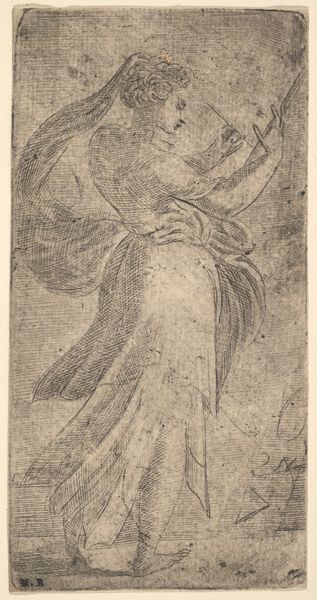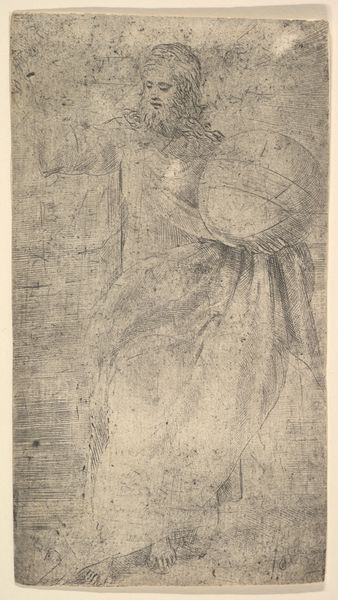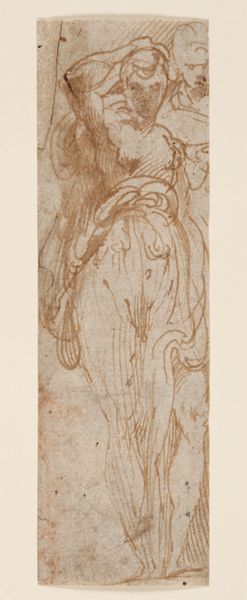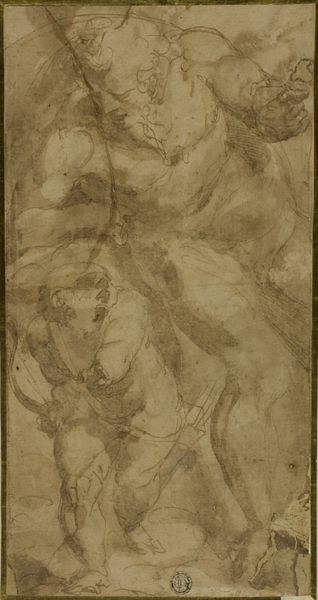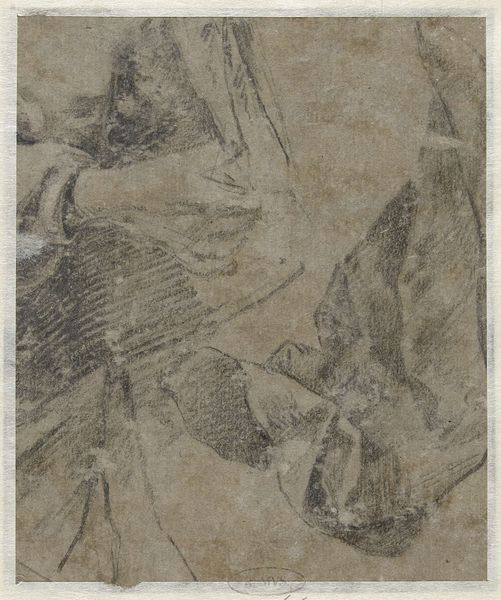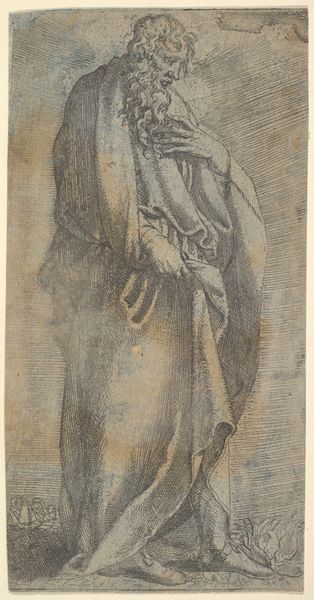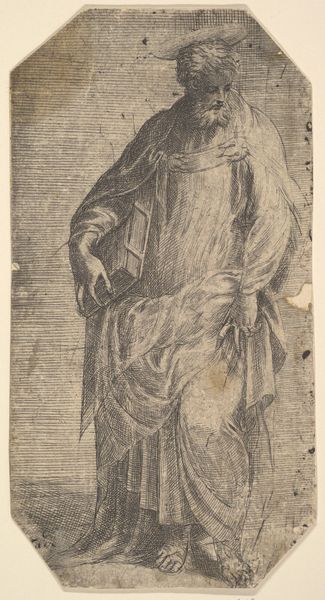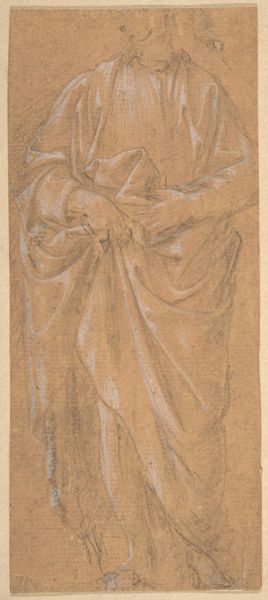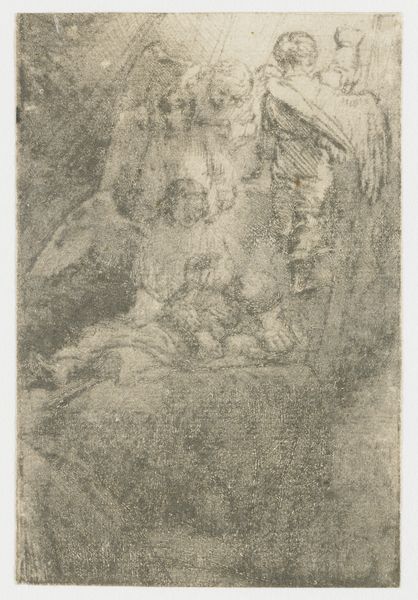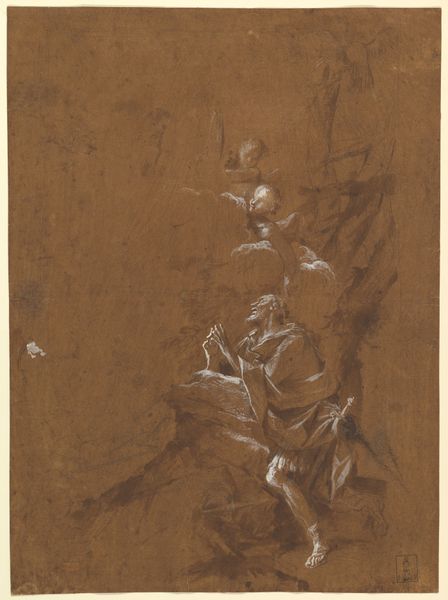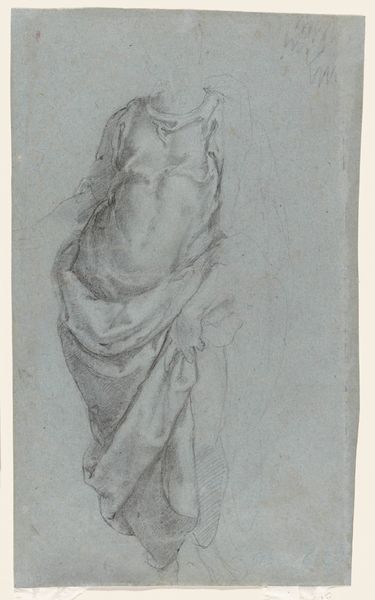
Saint James Major, a staff in his left hand, book in his right, from "Christ and the Apostles" 1543 - 1553
0:00
0:00
drawing, print, etching
#
drawing
# print
#
etching
#
figuration
#
history-painting
Dimensions: sheet: 7 11/16 x 4 1/8 in. (19.5 x 10.5 cm)
Copyright: Public Domain
Andrea Schiavone made this print of Saint James Major in the mid-16th century, using etching. Rather than carving an image into wood or metal directly, etching relies on acid to do the work. The metal plate is covered with a waxy, acid-resistant ground, and the artist scratches away the ground to expose the metal. When the plate is dipped in acid, the exposed areas are eaten away, creating lines that hold ink. The printmaker then burnishes the plate smooth, and the image emerges on paper when it is run through a press. The resulting image has a distinctive character, a network of fine lines capturing the voluminous figure of the saint. We might think about Schiavone's role in this process, not as a carver, but as a preparer, a director of chemical and mechanical forces. In that respect, his art anticipates the industrial age. The editioning of prints like this one allowed for the wider distribution of images than ever before, impacting society as artwork became more accessible to wider audiences through new modes of production.
Comments
No comments
Be the first to comment and join the conversation on the ultimate creative platform.
